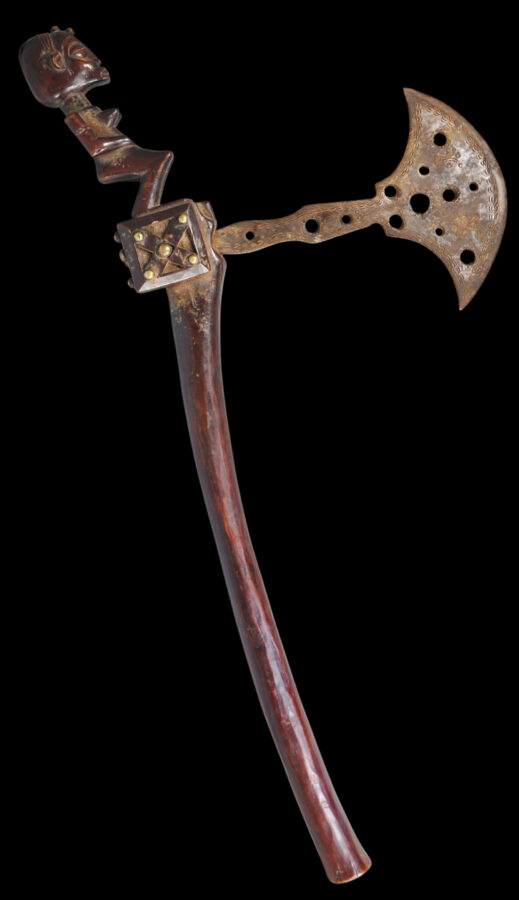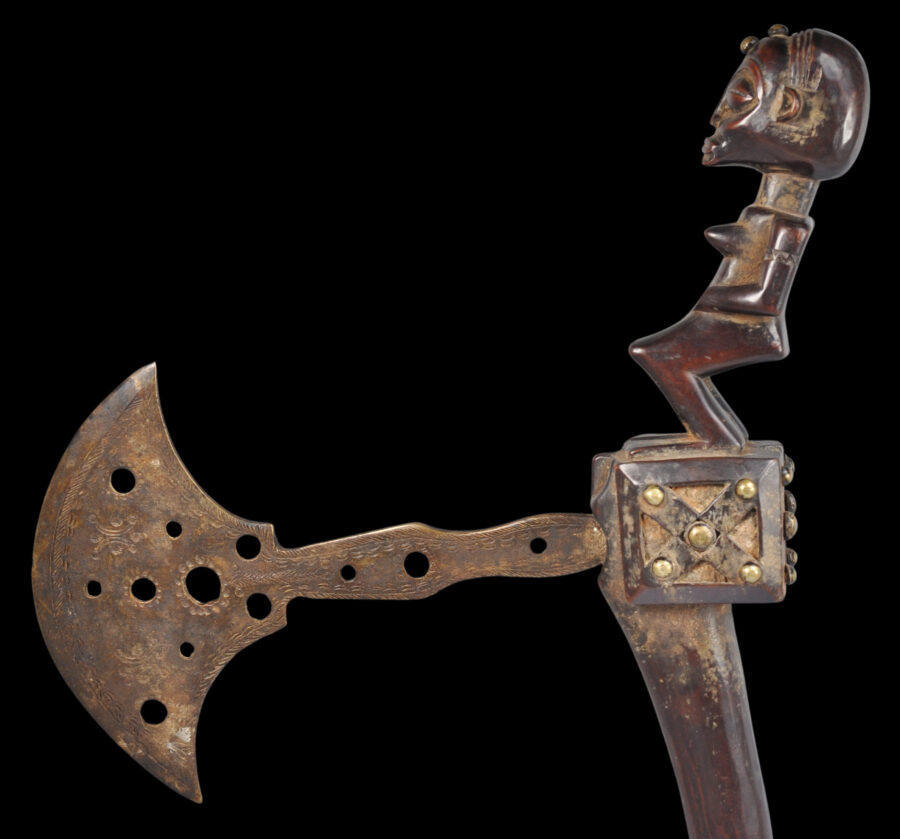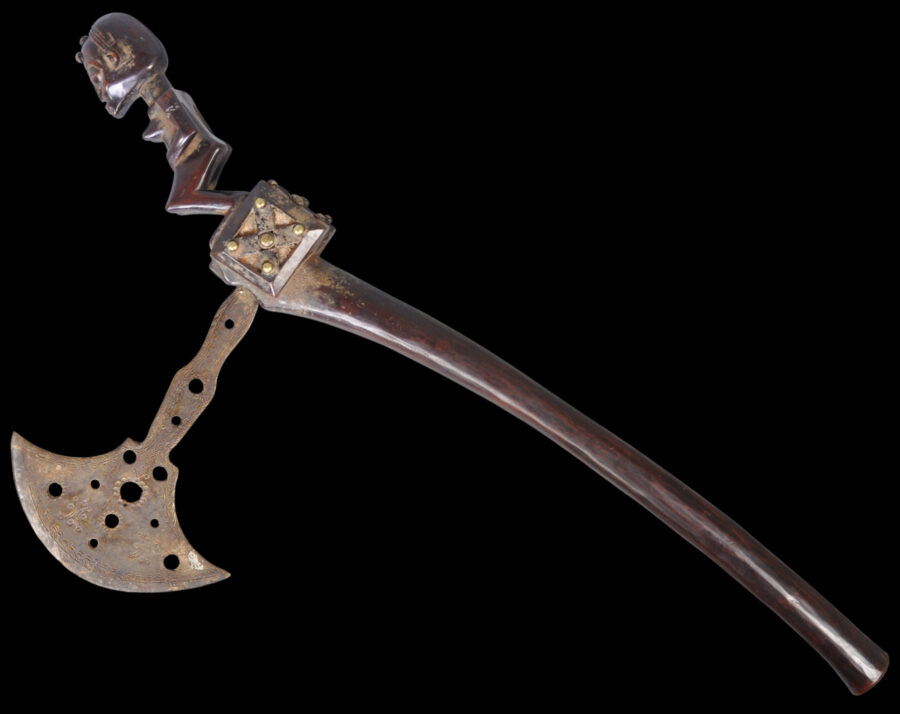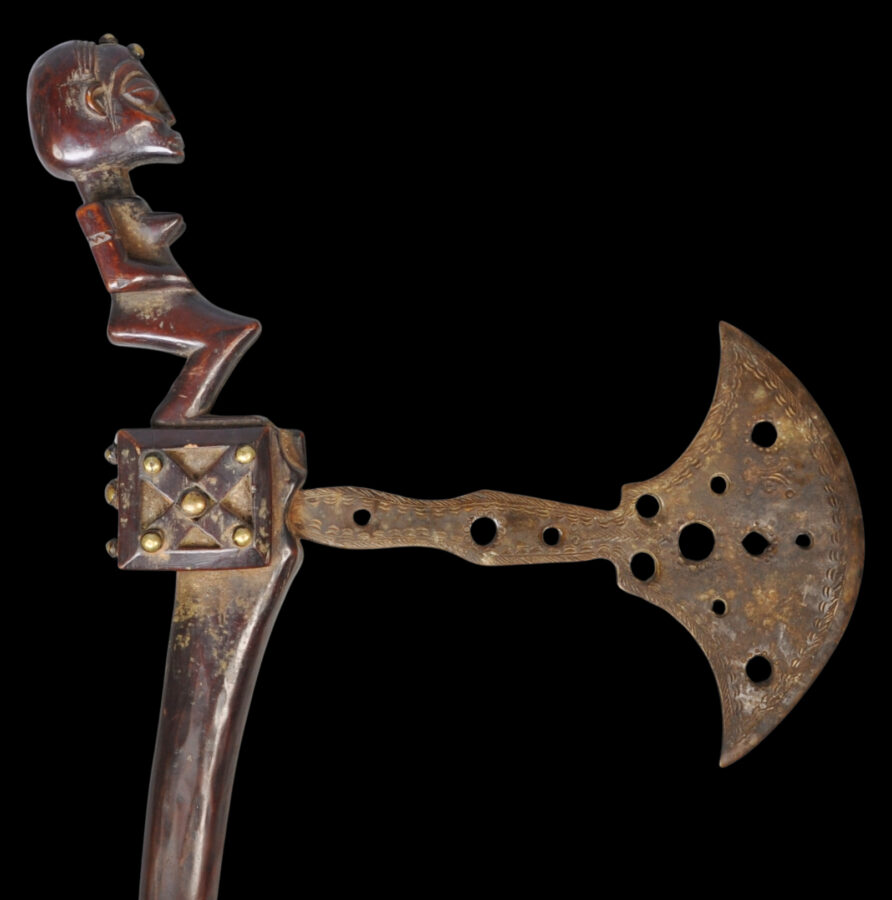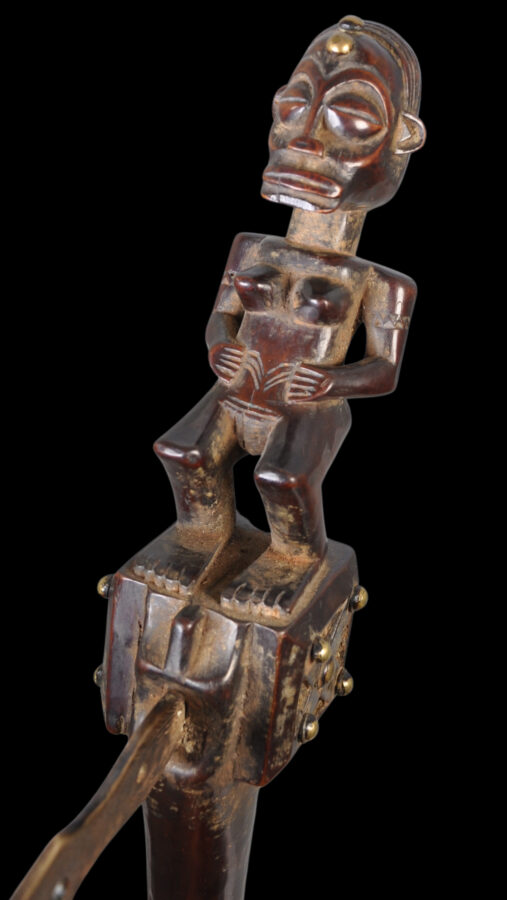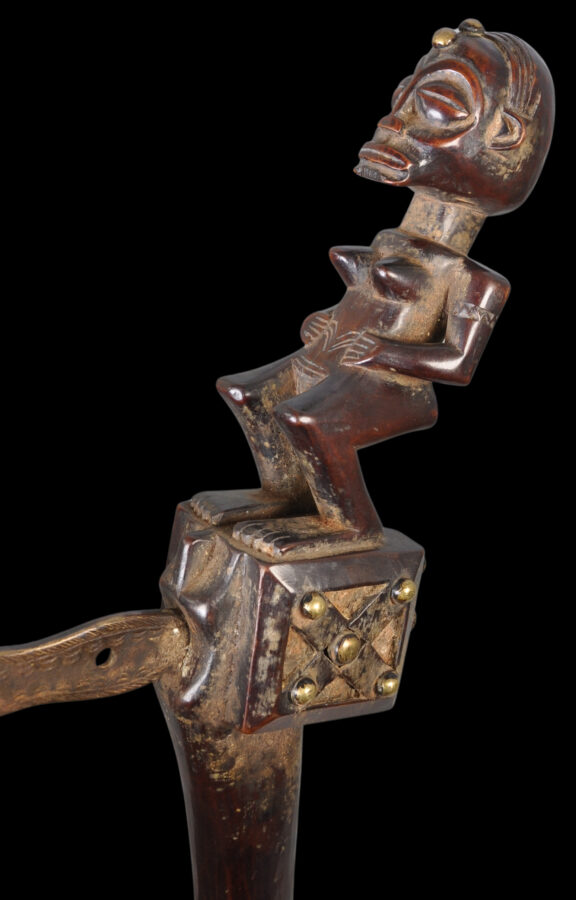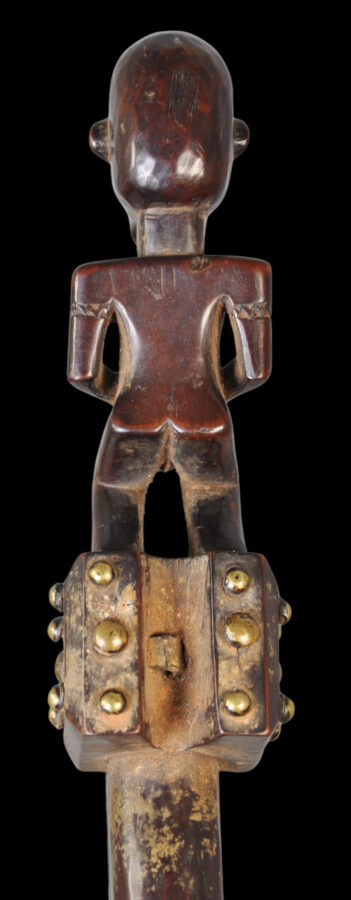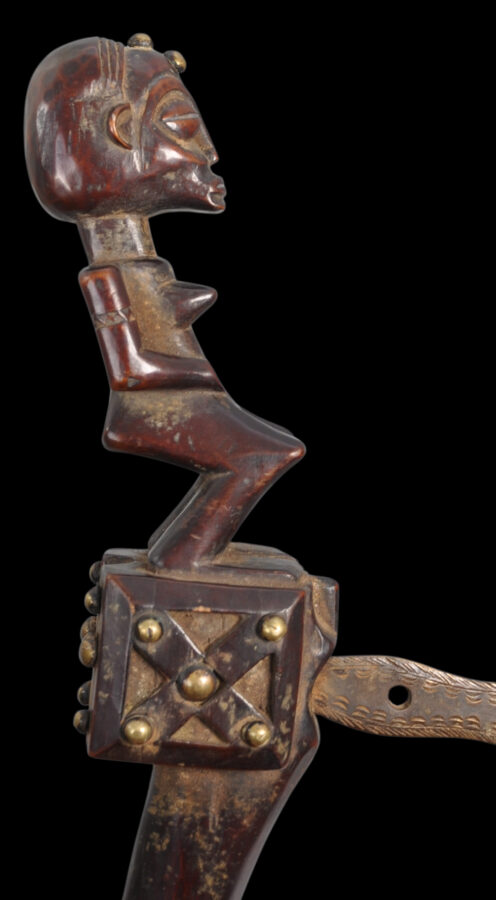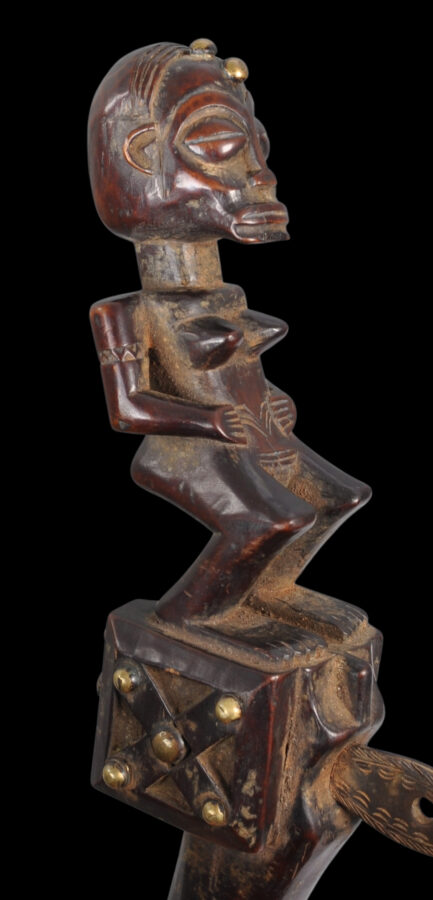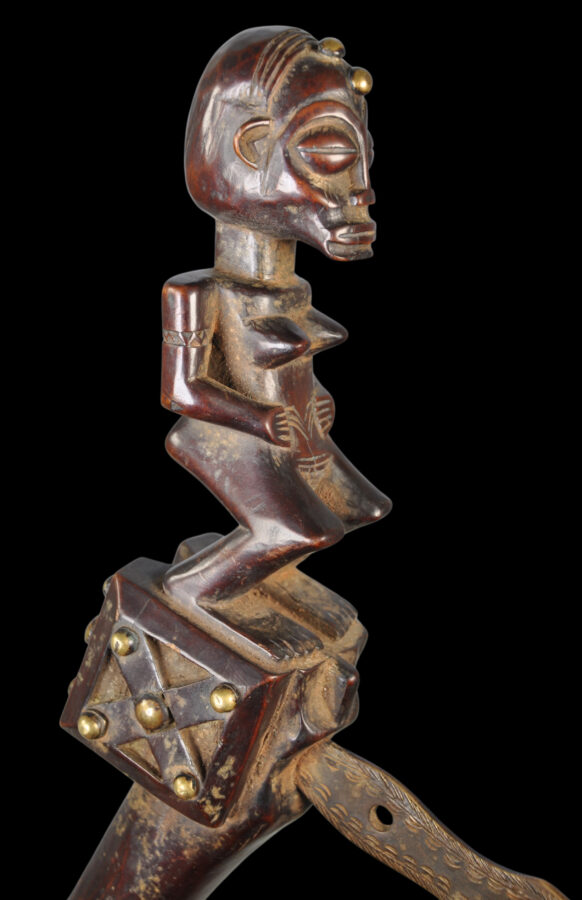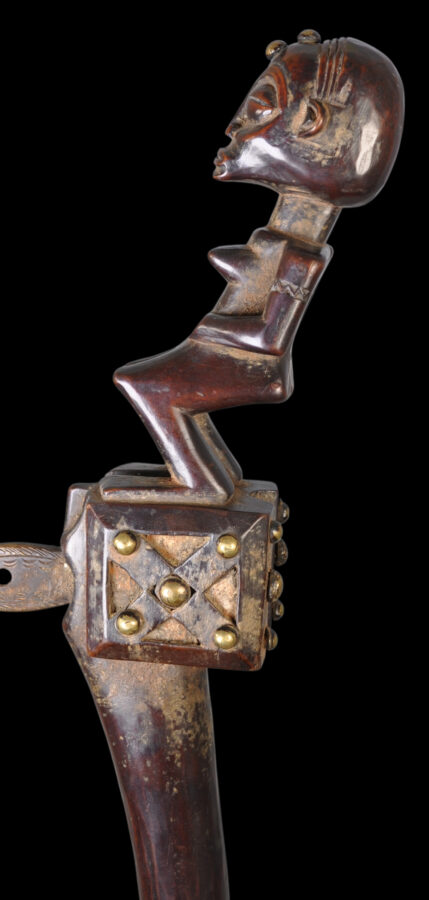Enquiry about object: 7172
Fine Chokwe or Luba Prestige Axe with Brass Studs
Chokwe or Luba People, Angola or Democratic Republic of the Congo. 19th century
length of wooden handle: 56.2cm, width (including axe): 25cm, weight: 531g
Provenance
private collection, UK
This well-carved prestige axe, from the Chokwe people (also spelt Tchokwe) or Luba people of Angola and the ‘Democratic’ Republic of the Congo, is carved with a long curved handle, and a finial carved as a squatting female ancestor figure. A pierced and incised blade is there to define the item as a prestige axe rather than a prestige sceptre.
The ancestor figure is very finely rendered with a jutting chin, delicate ears, coffee-bean eyes, and pointy breasts. A fringe of hair hints at a larger hairstyle and there are scarification marks on the stomach, as well as upper arm bands on each arm. Two brass studs decorate the forehead. These are complimented by four studs on each side of the cubic platform on which the figure squats.
The figure is very similar to an example carved to the back of a seat given to the Musee Royal de l’Afrique Centrale in Tervuren, Belgium in 1913, attributed to the second half of the 19th century, and illustrated in Wastiau (2006, plate 44.)
Axes were a sign of status in central and southern Africa, and in many cases their blades rendered the axes as non-functional by virtue of their weakness. Prestige axes such as the example here were a sign of status, authority and power. Local chiefs would wield such an item as a sign of their authority. Chiefs were regarded as representatives of god on earth and they were charged with mediating between the living and the dead.
The axe is in fine condition, with a good, dark patina.
References
Klopper, S., A, Nettleton & T. Pethica, The Art of Southern Africa: The Terence Pethica Collection, 5 Continents, 2007.
Wastiau, B., Visions of Africa: Chokwe, 5 Continents, 2006.


